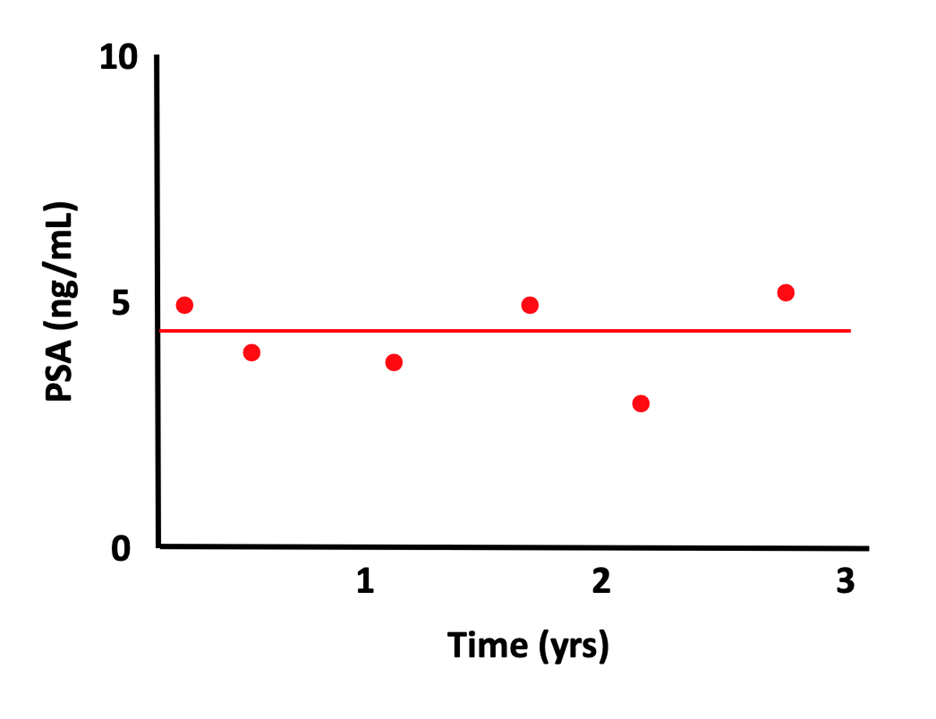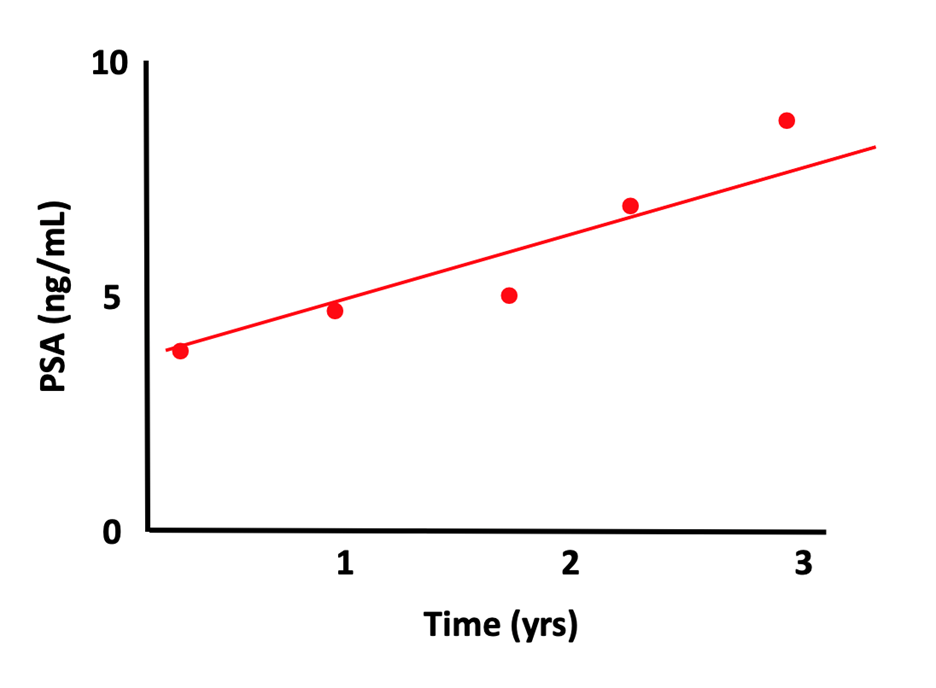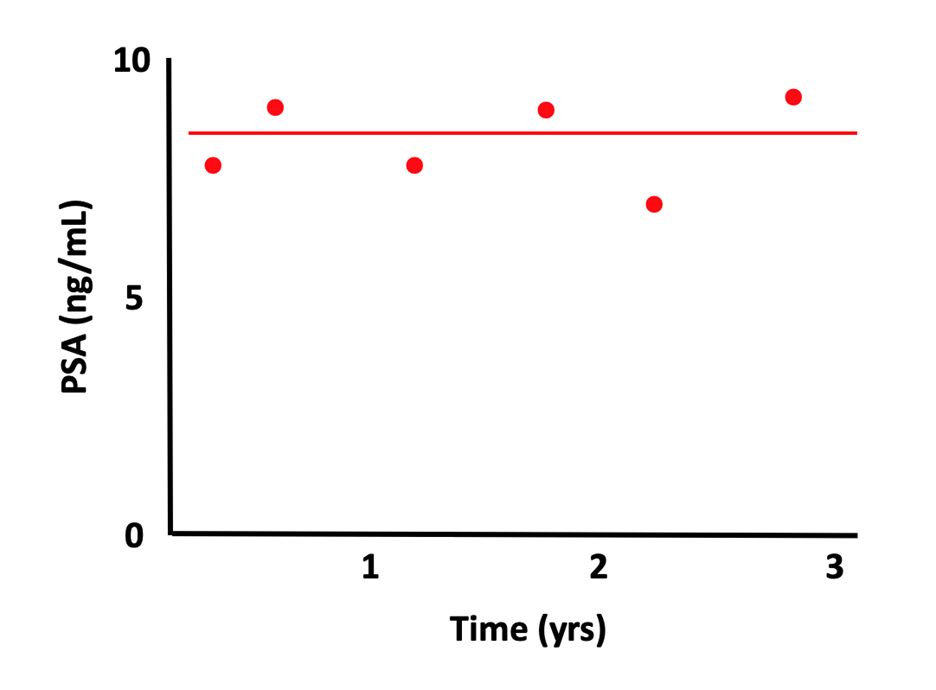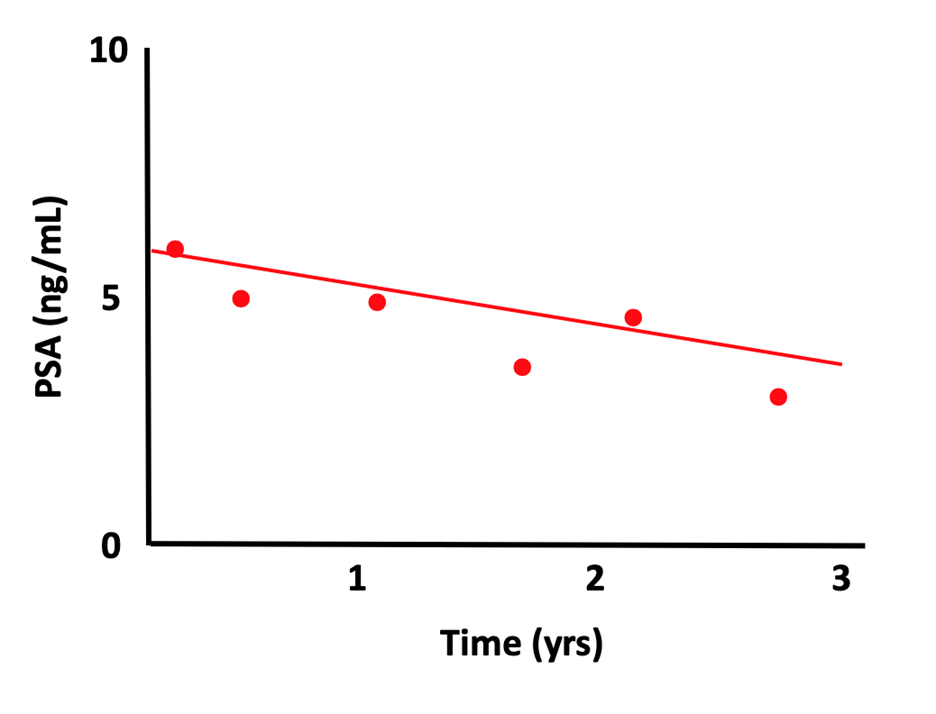Before a Prostate Biopsy, What is the Importance of “PSA Kinetics”?
If a man has an elevated prostate-specific antigen (PSA) blood test, his primary care doctor may refer him to a urologist to discuss whether or not to have a prostate biopsy to check for cancer. An elevated PSA test may also be called a “high blood test,” “high PSA,” “high prostate level,” or “high prostate cancer screening test.” The PSA test may be ordered for routine screening purposes in healthy men. This might be due to a family history of prostate cancer. It may also be due to symptoms such as urinary frequency, getting up at night to pee, or difficulty passing urine.
There are many reasons why a urologist may counsel a man on whether they should or should not have a prostate biopsy. However, if your urologist does not order a biopsy, then they will more than likely continue with PSA surveillance. This does not mean that you have prostate cancer (since a biopsy is needed to diagnose prostate cancer). Rather, it is wise to continue monitoring the PSA blood level over time to continually assess the risk/benefit ratio of prostate biopsy.
PSA velocity, or what may be called “PSA kinetics,” is the change in PSA over time, and how fast it may be changing. The reason for checking PSA kinetics is that your PSA levels can fluctuate, or change, over time and your “normal PSA levels” may be a little higher than most men in your demographic category. There may be many reasons for a fluctuating PSA. It can be influenced by health, diet, exercise, prostate inflammation, etc. Although not a “be all, end all” assessment, PSA kinetics is a simple calculation that allows your urologist to be able to see if your PSA is increasing, decreasing, or staying the same over time.
It is important to not over-diagnose non-life-threatening prostate cancer and to decrease the potential risk of a prostate biopsy (including discomfort and infection). PSA kinetics can help a urologist and a patient decide when the time is right for the patient to have a prostate biopsy. In general, a stable (unchanging) PSA trend over time is reassuring while a consistently rising level is concerning for prostate cancer.
Below are several examples of PSA kinetics graphs (which highlight the importance of the “slope of the line”) that may be similar to your situation. Each one includes a clinical interpretation:
-
Mildly elevated PSA, but stable over time.
You may be referred to a urologist for consideration of a prostate biopsy for a PSA that is somewhat elevated above normal (PSA 0-4 ng/mL). However, your urologist may elect to recheck the PSA and find that it is slightly lower than the initial value. This starts a period of “PSA surveillance,” which shows that over a 3-year time period, the PSA may change slightly, but does not increase a lot:
-
A “high normal” PSA (~3.8 ng/mL) that over a time period of PSA surveillance shows that the PSA is increasing consistently over time.
The slope of this line may indicate that a prostate biopsy is necessary to assess if prostate cancer is present:
-
An elevated PSA (~7.8 ng/mL), but because of several factors (i.e., age, poor overall health, etc.) your urologist opts for you to undergo a period of PSA surveillance.
This shows that over time your PSA is elevated, but stable, so a prostate biopsy may or may not be necessary:
-
An elevated PSA (~5.8 ng/mL), that decreases over time. Given the downward slope of the PSA vs timeline, this may mean that the true PSA is lower than initially suspected (within a normal range), so it does not require a prostate biopsy:

It is important to understand that the above four examples may not be exactly the same as your PSA journey. Rather, they are used to show the potentially useful value of PSA kinetics when deciding about the possible benefit of a prostate biopsy. Each clinical decision about the timing and necessity of a prostate biopsy should be made in a shared decision-making process with your urologist.

